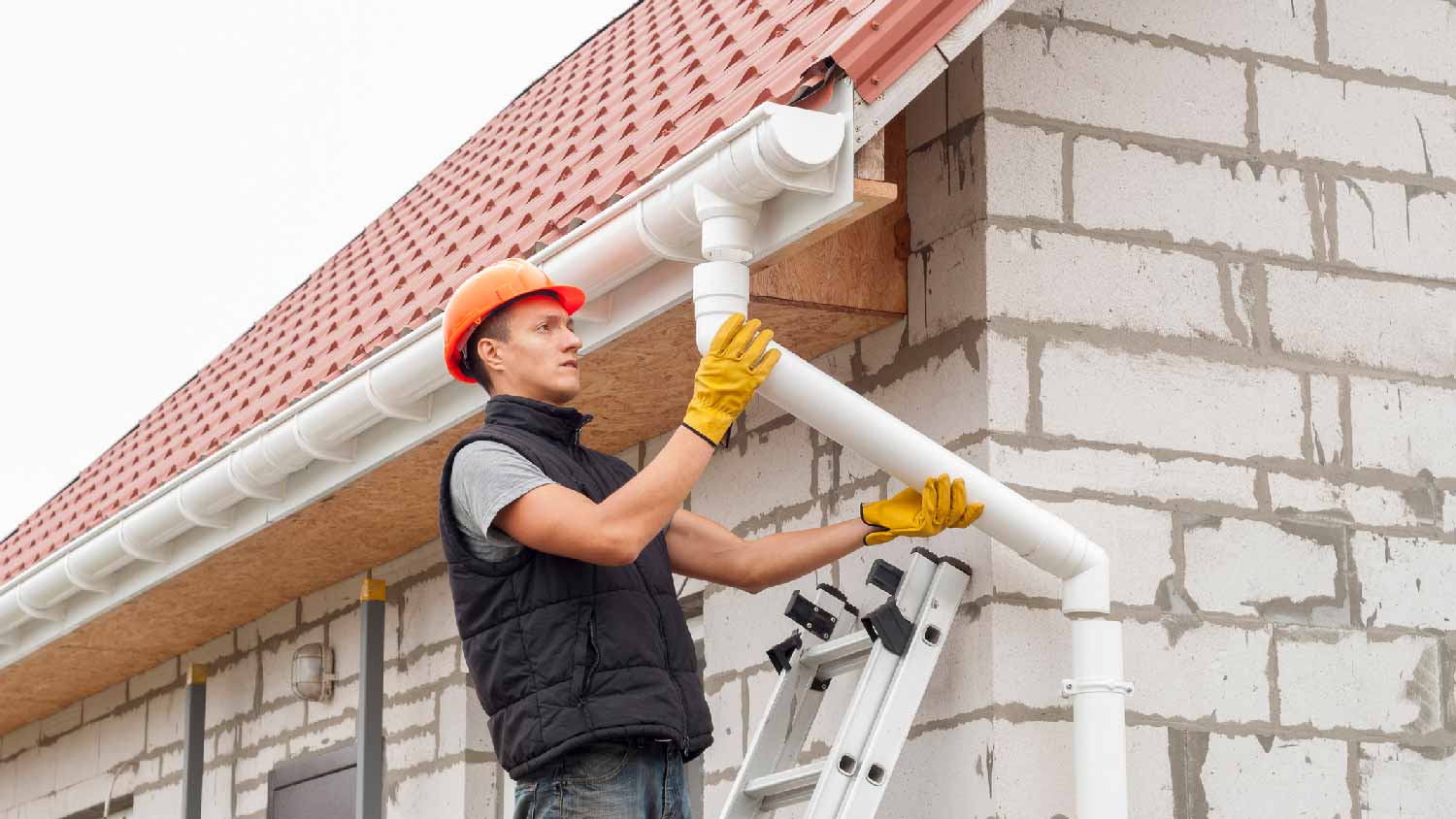
Learn about the average cost of zinc gutters when having new gutters installed at your home. Long-lasting zinc gutters can cost twice as much as aluminum gutters.
Throw your gutter problems down the drain


Downspouts must be properly sized for your roof’s surface area.
You should clean your gutters at least twice annually to prevent clogs and other problems.
Downspouts should be installed at least 4 to 6 feet away from the home.
Gutter downspouts are vertical pipes that divert the rainwater in your gutters away from your home’s foundation. They have a very important role in preventing costly water damage, so if you notice a problem with yours, it’s best to address it ASAP. Use this guide to troubleshoot common reasons why your downspout isn’t working properly.
Often, a downspout stops working properly if it’s clogged. Debris like leaves, twigs, and animal nests can accumulate inside, creating clogs that prevent the free flow of water. These clogs typically start with a small object getting caught, which accumulates debris around it over time, potentially leading to a significant blockage.
That’s why it’s important to perform regular gutter maintenance, which includes cleaning out the gutters and the downspout at least twice per year—once in late autumn or early winter after most of the leaves have fallen and once in early spring to remove debris that accumulated during the winter.

Downspouts need to be properly sized for your region’s typical precipitation. If it’s too narrow for the amount of water it receives, it can overflow, causing water to spill over the gutters. Additionally, the downspout needs to be sized for your roof’s surface area because your roof is what catches the rain before it heads to the gutters. If you have a very large roof, it will catch lots of rain, so you’ll need a larger downspout to manage it. If the downspout is too small, it becomes susceptible to overflowing during heavy rains.
Downspouts should typically be at least 4 to 6 feet away from your home, and sometimes they need to be even farther. When they’re installed too close to your home, they can cause water to pool around the foundation, which can lead to very costly structural damage. Fortunately, extensions are usually possible, and many homeowners can learn how to extend gutter downspouts themselves.
Gutters and downspouts are often installed by connecting the pieces together to form the right length for your home. And the larger your home, the more connections you likely have. Each of these connections needs to be tight, secure, and properly sealed, or else it can lead to leaks and water flow problems.
When it rains, you shouldn’t notice any water seeping out of the downspout unless it’s coming out of the bottom. If you notice water leaking around the downspout seams, then you likely have a connection issue on your hands.
In cold climates, standing water in the downspouts can freeze, which can create ice dams that block the free flow of water and cause overflows. Depending on your region’s weather forecast, you can either wait for the ice to melt or learn how to melt ice in the downspout yourself.
You can also install things like insulation and heat cables in your gutters to help prevent this problem from happening in the future.

Like any part of your home’s exterior, downspouts will deteriorate over time. Just how long gutters last depends on the gutter material. For instance, vinyl gutters have the shortest lifespan at around 10 to 15 years, while copper gutters can last for 100 years or more. Meanwhile, aluminum gutters last for around 20 to 30 years, on average.
Gutters and downspouts need to be securely installed and properly sealed to work well. They typically have connections that, when not installed properly, can cause leaks and prevent water from diverting away from the home. If you suspect your gutters weren’t properly installed, call a local gutter installer to prevent costly problems like leaks, foundation cracks, and mold.
From average costs to expert advice, get all the answers you need to get your job done.

Learn about the average cost of zinc gutters when having new gutters installed at your home. Long-lasting zinc gutters can cost twice as much as aluminum gutters.

This guide will give you an idea of how much you can expect to pay when getting new seamless gutters installed when accounting for removal, labor, and different gutter materials.

Here's everything you ever wanted to know about saving money by installing faux copper gutters instead of real copper gutters.

Vinyl gutters are solid, low-cost alternatives to expensive metals like steel and copper. Learn what makes up the total project cost for installing them—and where you can save.

Have you noticed overflowing gutters when it rains? Here are five common problems that could be causing the deluge of water and what you can do about it.

Learn to choose the proper size gutters and downspouts to install, plus some gutter sizing tips, maintenance routines, and gutter alternatives.